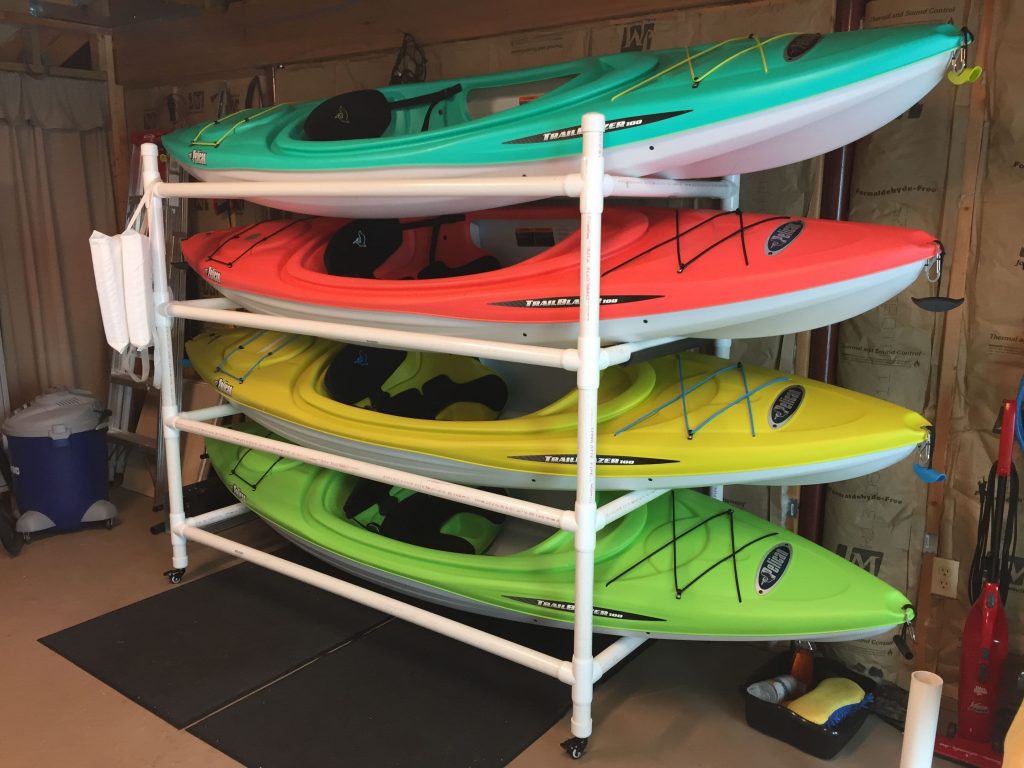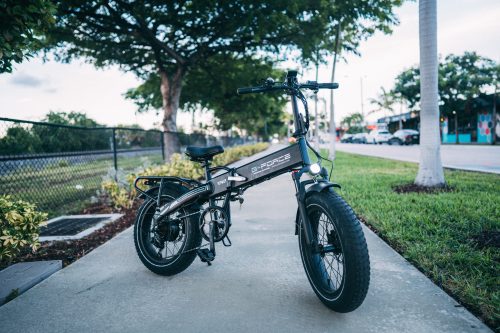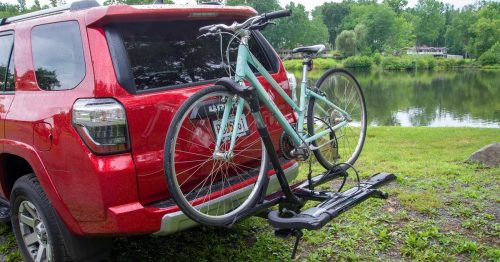When storing your kayak, it’s important to take proper care and do it correctly to protect it from damage and extend its lifespan. There’s nothing worse than finding mold, water damage, scratches, or a crack in your kayak because it has been stored improperly throughout the winter. Thankfully, there are plenty of kayak storage ideas that you can consider to meet your specific needs and requirements.
In addition to storage ideas, having proper means of transportation is also important to protect your kayak from damage. It’s a good idea to consider kayak carts for mobility if you struggle to carry your kayak or, for transportation purposes, a kayak trailer or kayak roof racks for your car.
Kayak Storage Considerations
Many different kayak storage mounts are available that suit a variety of environments and personal preferences. Most can be bought, but for penny-pinchers or DIY enthusiasts, you can improvise and your own.
If floor-mount clutter is the main concern, then wall or ceiling mounts are more efficient solutions.
The things you need to consider before settling on the type of kayak storage mount you need are:
The Number of Kayaks
Considering how many kayaks you need to store will directly impact what type of storage solution you will need. Freestanding or wall-mounted kayak racks are usually the best bet for storing multiple kayaks, while pulley systems usually only take one kayak at a time.
Kayak Size and Weight
The kayak’s build and design play a large part in how it should be stored. To determine the best storage solution, you must consider the kayak’s size, structure, and weight. A large, heavy kayak may be easier to store using a ceiling hoist rather than mounting it to a wall.
Preferred Storage Locations
Where you store your kayaks will not only affect the kayak’s longevity but will also improve clutter, protect your kayak from exposure to elements, and secure it against theft.
How You Mount and Secure Your Kayak
Your choice of how you want to mount your kayak will determine the type of storage. Generally, kayaks are stored by hanging them from the ceiling through a pulley system, wall-mounted brackets and racks, or freestanding floor racks.
Pulley systems are perfect for anyone that wants to store their kayak with limited floor space. It is also quick and easy to load and secure the kayak and pull it upwards, especially for people of shorter stature.
While wall-mounted and freestanding storage options allow you to store multiple kayaks on the same system, it takes more time to load them properly. It might also prove difficult for those a bit shorter to lift the kayaks to the top mounting levels of the storage units.
Material Preferences for DIY Storage Mounts
Kayak storage mounts are normally made from steel or aluminum, often powder coated, and will most likely include some foam protection to prevent damage to your kayak. Ceiling-hoist storage offers heavy-duty nylon straps and strong metal clips.
However, ropes, straps, timber, or PVC pipes can be used for those who prefer to construct their kayak mounts.

Different Kayak Storage Ideas
Kayaks can either be stored indoors or outdoors, depending on your preference. Each specific storage type has its pros and cons. The most popular ways of storing kayaks are:

Overhead Storage

Wall- Mounted

Freestand Mounts
Indoor Kayak Storage Ideas
1. Overhead Kayak Storage
If you haven’t factored in the storage requirements of the kayak you’ve just bought or have a particularly heavy kayak, you might opt for an overhead mounting system. A fiberglass kayak can be prone to damage, and a large sea kayak will take up enormous space. Storing your kayak up at roof level is entirely out of the way, and there’s no risk of it getting bumped or damaged. Just make sure it’s securely fastened to the roof because a sudden fall from the ceiling will cause damage.
Overhead Pulley Systems
Kayak hoists and pulley systems are popular storage solutions and can be purchased or self-made. Even the heaviest kayak can then be raised and lowered with ease. A heavy-duty sling system is used and placed on both ends of the kayak. The pulley wheels are bolted to the ceiling, often the garage ceiling, in a safe and accessible location where you can easily fasten the hoist cord but where it can’t be accidentally released.
This storage system prevents uneven pressure distribution within the kayak and keeps it well-ventilated and away from pests.
Fixed Ceiling Rack
A fixed bar-type system is permanently secured to the roof. Storing a kayak requires you to push the kayak up into position on the bars.
You can make this kayak mount yourself or purchase a ready-made system bolted into ceiling supports. The bar generally has rollers or foam that prevents scratches from occurring when loading the kayak.
Depending on your ceiling height, this system can be challenging to manage. A shorter person will struggle to angle the kayak onto the rack properly.
2. Wall-Mounted Kayak Storage
Wall-mounted kayak storage can be very convenient. Multiple kayaks can be stored underneath each other, and these mounts can be used indoors and outdoors. Most people won’t have trouble accessing these, unlike the overhead systems that are more difficult for shorter people. These kayaks may still get in your way, depending on how much space you have alongside your walls.
Fixed Frame Wall Mount
This kayak storage frame is probably the most commonly used indoors and outdoors. Usually made from aluminum or timber, these are readily sold in stores and easily secure to the wall.
Be wary of the weight capacity and how it’s secured to the wall. If you exceed the carrying capacity or secure it to a weak part of the wall rather than a beam or solid section, you may cause damage to the wall and your kayak.
Sling Wall Mount System
The kayak is stored in a wall-mounted sling in the same style as a fixed frame. This sling is made of straps or heavy-duty ropes with padding up against the wall. One major perk to this system is that the sling lays flat against the wall when kayaks are removed and won’t be in the way—a great space-saver.
3. Freestanding Kayak Storage Mounts
A freestanding system is designed similarly to a wall-mounted storage rack. However, the freestanding system can be moved around much easier as it is normally not fixed to a specific area through bolts or drilling.
Some freestanding kayak storage racks are fitted with wheels or can easily be picked up and moved for better mobility. This offers a lot of flexibility which might appeal to some.
Sawhorse Kayak Stands
A freestanding sawhorse can be the cheapest and easiest kayak storage option. Although this kayak storage method is affordable, an easy DIY project, portable and straightforward to use, it is not the most optimal method of storing a kayak as they take up a lot of floor space.

Outdoor Kayak Storage Ideas
Although indoor storage ideas for your kayaks offer many benefits, some do not have the option of indoor storage.
Additionally, when it comes to outdoor storage, there are some extra concerns that you should consider with storing and protecting your kayaks properly, such as ensuring that kayaks are protected against harmful elements such as excess moisture, UV damage, extreme temperatures, and theft.
The most common outdoor kayak storage options are freestanding or wall-mounted racks, where the kayak sits flat or slightly on its side. If you have a sizeable deck outside, it is a perfect covered outdoor storage option for your kayaks, should they fit.
For those with multiple kayaks who want extra protection, kayak sheds are often used as storage solutions. This is something that pro DIY’ers can construct themselves if they’re feeling up to it.
Remember that when storing your kayaks outdoors, remove any material seats and compartments that may become moldy or infested with pests.
Kayak Care Tips Before Storage
Properly caring for and cleaning your kayak before storing it away will extend its lifespan and give you more happy years on the water. Don’t think about bringing your kayak straight from the water and leaving it in your garage.
1. Rinse and Drain Your Kayak
Always drain the water entirely from the kayak, and if you’ve been in saltwater, rinse with fresh water before storage.
2. Keep Your Kayak off the Ground
Keeping your kayak up off the ground in storage is a no-brainer. Leaving your kayak lying on the ground will enhance the risk of it being damaged and constantly in the way. Make sure to always apply proper kayak storage techniques.
3. Keep the Kayak’s Weight Distribution Level
When storing your kayak, try to ensure that the weight is distributed more or less evenly. If the kayak is stored in an awkward position with uneven weight distribution for a long period, you may find it misshapen and dented after a while.
4. Be Aware of Exposure To Temperature
When storing your kayak, whether it be indoors or outdoors, be aware of nearby heat sources. For example, having it too close to a heater or exhaust could cause it to melt and deform. A warm, even temperature is perfect, with no extremes if it can be helped.
How to Protect Your Kayak From the Elements
When storing your kayak outdoors, the priority is protection from the elements. The best is to find a safe location where the kayak is covered by rain and sun.
If stored under a porch, deck, or roof eaves, you can cover it with a heavy-duty tarp, which is good for environmental damage and degradation and helps keep the kayak out of sight to prevent opportunities for theft.
Winter Storage
If you absolutely must store your kayak outdoors during the winter season, there are some important things you can do to ensure that the kayak remains in good condition.
A plastic kayak may become brittle from exposure to extreme cold, so do not allow snow to collect on the kayak. If you don’t have a storage location where the kayak is under some cover, as a last resort, cover it with a tarp to keep the snow off.
It would be best to store plastic kayaks on the side or upside down, while a composite kayak should be stored upside down.
Always clean and inspect your kayak before storing it away. If you have small cracks in the hull, fill them as soon as possible. Unfilled cracks can collect water that will freeze and exacerbate the existing damage.
Likewise, if you have a composite kayak with a timber trim, it’s often advised to loosen the screws to prevent any cracking and warping over winter.
Pests and Nesting Animals
Keep animals from nesting or living inside your kayak over the winter. An upside-down kayak hull is a lovely-looking winter home for a rat or raccoon. Safe and warm. However, when Spring comes, you might find that their claws and urine have caused very noticeable damage to your kayak. And you will then have the unpleasant job of evicting the critter and cleaning it out of its mess before being able to take your kayak out.
You can keep animals out by blocking the entrance to the kayak with any breathable material. A spray deck or cockpit cover is ideal. You want to ensure the breathability of the interior of your kayak to keep moisture from building up.
Whether you have your kayak for fishing, exploring the coastline, or adventure paddling, you need to be able to store it appropriately. They are often a hefty investment, so you want to maximize your value and enjoyment.
Always clean your kayak and check it for any damage before packing it. As a bare minimum, if you cannot store your kayak indoors, try to find a storage location that is out of the elements. Happy paddling!






